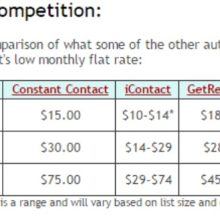The Ultimate Guide to Building an Emergency Fund
In today’s unpredictable world, having an emergency fund is more than just a financial safety net—it’s a necessity. Whether it’s an unexpected medical bill, job loss, or a sudden major repair, life has a way of throwing curveballs that can strain your finances to the breaking point. Building an emergency fund can provide you with peace of mind and stability when you need it most. This comprehensive guide will walk you through the steps to create, grow, and maintain an emergency fund from scratch.
Understanding the Importance of an Emergency Fund
An emergency fund is essentially a financial buffer designed to cover unexpected expenses without the need to borrow money, thereby avoiding debt. Financial experts often recommend having enough to cover three to six months’ worth of living expenses, though the exact amount can vary depending on your personal situation and risk factors.
Step 1: Assess Your Financial Situation
Before you start building your emergency fund, take a thorough look at your finances. This means evaluating your income, expenses, debts, and any savings you currently have. Understanding where you stand financially will help you set a realistic goal for your emergency fund.
- Create a Budget: List all your monthly expenses, including rent, utilities, groceries, and any debts. This will give you a clear picture of how much you need to live on each month.
- Set Your Target: Based on your budget, calculate how much you would need to cover three to six months of expenses. This is your initial goal for your emergency fund.
Step 2: Open a Separate Savings Account
Your emergency fund should be easily accessible but separate from your main checking account to avoid the temptation to spend it on non-emergencies. Look for a high-yield savings account that offers a good interest rate, low fees, and easy access when needed.
Step 3: Start Small
If the idea of saving several months’ worth of expenses seems daunting, start small. Even saving a small amount regularly can add up over time.
- Set a Mini-Goal: Begin by aiming to save $1,000, and gradually increase your goal as you meet each milestone.
- Automatic Transfers: Set up automatic transfers from your checking to your savings account right after each payday. Treat it like a non-negotiable expense.
Step 4: Cut Unnecessary Expenses
Review your monthly expenses and identify areas where you can cut back. This could mean dining out less, canceling unused subscriptions, or switching to more affordable services.
- Reduce, Reuse, Recycle: Adopt a more frugal lifestyle where possible, focusing on reducing waste and maximizing what you already have.
- Increase Your Income: Consider taking on freelance work, a part-time job, or selling items you no longer need to boost your savings rate.
Step 5: Stay Disciplined
Building an emergency fund requires discipline and patience. It’s important to stay focused on your goal, even when it means making sacrifices or when progress seems slow.
- Track Your Progress: Regularly review your savings and celebrate milestones to stay motivated.
- Adjust as Necessary: Life changes, and so will your financial situation. Adjust your savings goal and strategy as needed to reflect your current circumstances.
Step 6: Use It Wisely
Once you have built your emergency fund, it’s crucial to use it wisely. Reserve it strictly for true emergencies and replenish it if you ever need to use it.
- Define an Emergency: Make sure you have a clear definition of what constitutes an emergency. Typically, it should be something unexpected, necessary, and urgent.
- Replenish After Use: If you dip into your emergency fund, prioritize replenishing it as soon as possible.
Step 7: Review and Adjust Regularly
As your financial situation evolves, so should your emergency fund. Review your fund at least once a year to ensure it still covers three to six months of living expenses, especially if your income or expenses have changed significantly.
Common Challenges and Solutions
- Struggling to Save: If you find it hard to save, start by tracking your spending more closely and identifying areas for improvement. Even small changes can make a big difference over time.
- High Debt: If debt payments are making it difficult to save, focus on paying down high-interest debt first while still trying to save a small amount towards your emergency fund.
- Unexpected Expenses: When faced with unexpected expenses before your emergency fund is fully established, prioritize what’s essential and look for ways to minimize the cost.
Conclusion
Building an emergency fund is a critical step in securing your financial future. It won’t happen overnight, but with determination, discipline, and a strategic approach, you can create a financial buffer that will protect you and your loved ones in times of need. Remember, the peace of mind that comes from having an emergency fund is priceless. Start today, and take control of your financial well-being for a more secure tomorrow






